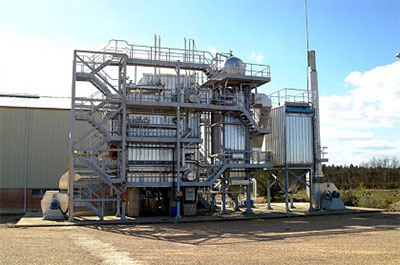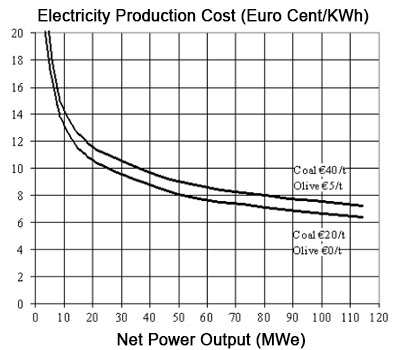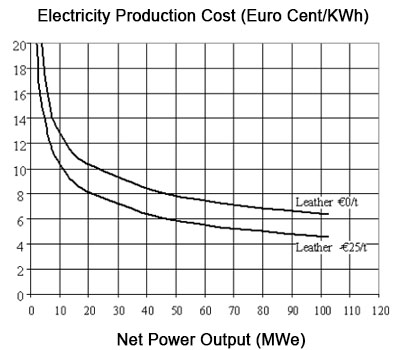Project Profile #6
Integrated SOx/NOx and particulate removal in coal/olive wastes and leather wastes combustion in a 3.5 MWth plant, Spain (2001-2005)
To download this project profile in PDF format click here.

650 kg/h fluid bed combustor, 3.5 MWth input
Project Objective
The main objective of this EC funded project [BioWaRe – Contract no. ENK5-CT2001-00523] was to assess the combined removal of SOx, NOx and particulates from an existing 3.5 MWth fluid bed combustion plant in Spain using catalytic promoted filter candles and sodium bicarbonate addition into the flue gases from the combustor. C.A.R.E. Ltd. was responsible for:
Project Summary
A pilot-scale filtration unit, supplied by Pall Schumacher, was operating between 2004 and 2005 to provide data on solids collection efficiency and use of the reactants. Over 80% simultaneous conversion was achieved with >99% solids recovery.
A techno-economic assessment of the two fuels, coal/olive wastes and leather wastes was made based on the available plant data. Full mass and energy balances of the processes were made, which allowed the power output to be calculated and from that the overall costs for abatement of the main pollutants SOx, NOx and particulates by conventional methods and for the combined filtration system developed within this work. The conclusions are presented below:
Electricity production cost
The total plant cost was slightly higher for leather than for coal (€225M at 100 MWe for leather wastes compared to €212M at 100 MWe for coal/olive wastes). The electricity production cost was lower as the electrical output was increased, with a cost of €cent 7.5/kWh at 100 MWe for the coal/olive cost of €40/t and €5/t respectively (Figure 1). There was little cost reduction with scale as the effects of additional heat exchangers and filter boxes of 1000 candles offset the other equipment economies of scale. As leather wastes are a lower cost feedstock, the net electricity price was more competitive and was as low as €cent6.2/kWh for a zero cost feedstock (Figure 2). However, the estimation of costs for a leather wastes power plant is unrealistic above 5-10 MWe, as the amount of waste in most locations precludes the possibility of building large plants. The acquisition of low cost wastes would be offset by significant transportation costs.

Figure 1 . Net Electricity production cost v's net electrical output and fuel cost. Coal/olive wastes 60:40 (year 2002)
From the results presented in Figures 1 and 2, it appears to be little scope for systems under 100 MWe, as a comparison with industrial EU prices would indicate1 There is more potential for domestic power sales as these tend to be higher and therefore the direct selling of electricity to domestic consumers, although more difficult, would be a more commercially viable option.

Figure 2 . Net Electricity production cost v's net electrical output and fuel cost. Leather wastes (year 202)
Although there are several biomass power plants in operation in the EU-15, there is obviously potential for applications. One of the major advantages which have not been considered in this assessment is that the plant should be operated as a combined heat and power plant. This would allow the process to be more commercially viable. Assuming a heat sale price of €cent1.5/kWh, the net electricity prices could be reduced by €cent3-4/kWh, making the prospect of producing electricity for industrial applications more viable.
It is therefore a preferred commercial option to operate small-scale power plants in combined heat and power mode, which would significantly improve the overall economics of the processes.
Project Status
The project was completed in 2005.
Reference 1 Statistics in Focus and Energy Advice Ltd: Electricity and Gas Price Comparisons, UK DTI, 2001.